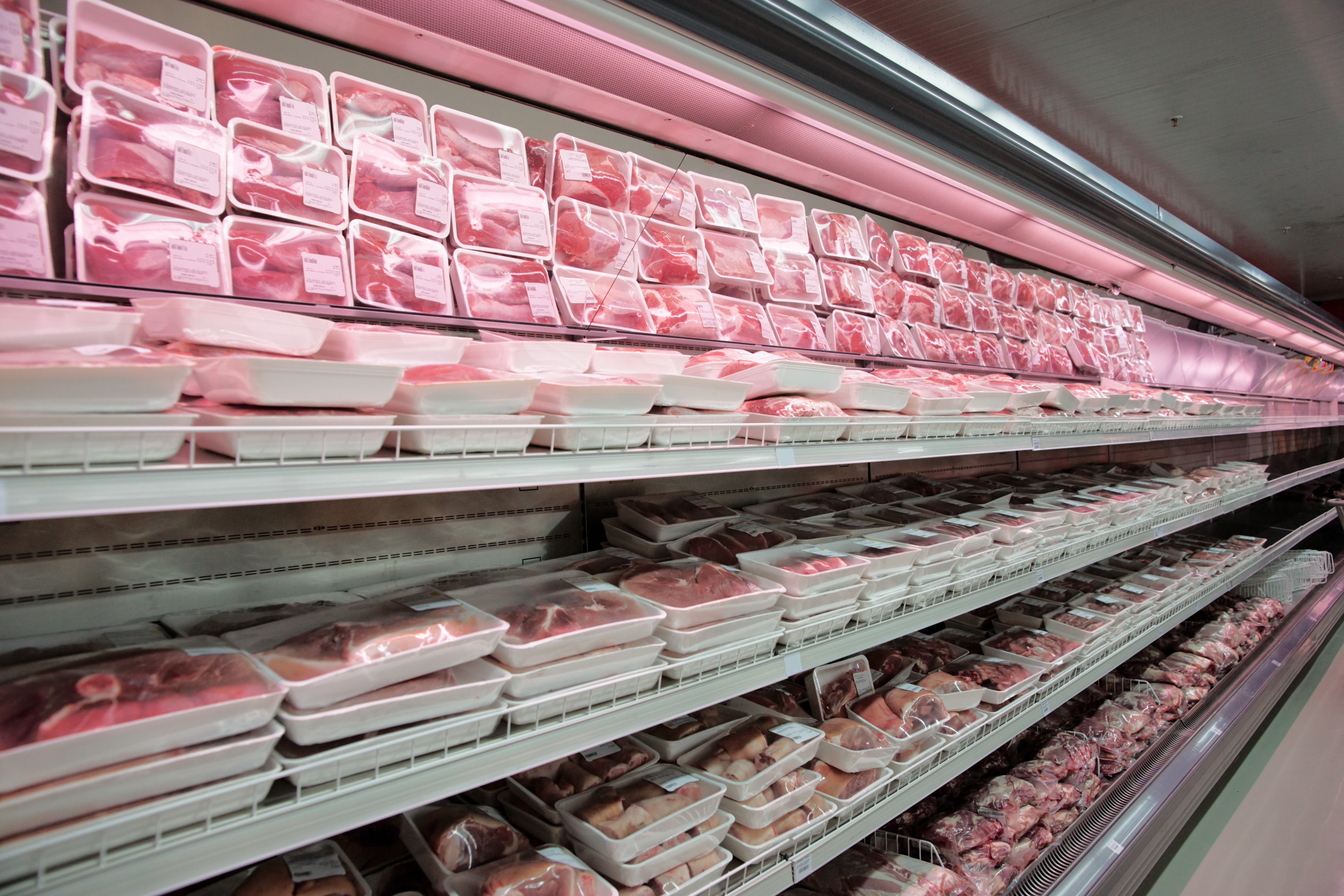Take a deep breath, carnivores: 87 percent of supermarket meat — including beef, pork, chicken, and turkey products — tests positive for normal and antibiotic-resistant forms of Enterococcus bacteria. Fifty percent of ground turkey contains resistant E. coli, 10 percent of chicken parts and ground turkey tests positive for resistant salmonella, and 26 percent of chicken parts come contaminated with resistant campylobacter. Resistant or not, the mere presence of these types of microbes means the majority of our meat comes into contact with fecal matter at some point. Not very appetizing, is it?
The government recently admitted something a lot of conscious eaters probably already suspect: A significant majority of supermarket meat is contaminated with antibiotic-resistant bacteria. But it did so vewwy, vewwy quietly. It came buried in the FDA’s 2011 Retail Meat Report, which reveals the results from periodic testing of common supermarket meat products for bacterial contamination and bacterial resistance to multiple antibiotics. The FDA leaves these numbers opaque, but thanks to calculations by the Environmental Working Group (EWG) using the government’s data, we know just how terrifying these results are.
The threat of these superbugs goes beyond the academic. Three of the bugs listed above cause tens of thousands of illnesses and hundreds of deaths a year. Resistant salmonella-tainted meat recently caused several outbreaks, one of them quite deadly. And E. coli from supermarket chicken has been linked to millions of antibiotic-resistant urinary tract infections in women.
For dedicated Grist readers, this shouldn’t be a total surprise. We’ve been reporting that researchers have been tracking antibiotic-resistant bacteria on meat for several years. But the fact that most forms of superbugs seem to be on the increase is no less disturbing.
The reasons why aren’t a mystery to most scientists. While overuse of antibiotics in human medicine plays a role, the preponderance of evidence suggests that the rampant overuse of antibiotics in livestock drives resistant microbe strains off the farm and into communities.
Medical researchers are all but begging livestock producers to scale back on the heaps of antibiotics fed to food animals every year — sound advice since 80 percent of all antibiotics consumed in the U.S. go to food animals — but the industry contends that such a reduction would be impossible. That’s true in a way: Most livestock would not be able to survive the cramped, stressful, disease-ridden conditions in which they are raised without a constant low-level dosing of antibiotics. As an additional boon, these antibiotics seem not only to prevent disease but also to increase animal size and weight for reasons that are not well understood (although scientists are suggesting it has something to do with screwing up animals’ microbiomes).
Of course, large-scale agriculture has shown the ability to severely restrict antibiotic use in livestock without courting disaster — in Denmark. Back in 1994, that country, one of the largest exporters of pork in the world [PDF], embarked on the so-called “Danish experiment” that prohibited farmers from feeding healthy pigs low doses of antibiotics. Even though farmers were still allowed to treat sick animals with antibiotics, usage since that time has dropped by about 40 percent. Meanwhile, pork production continued to increase.
Agribusiness was so threatened by the Danes’ positive results (which included a general reduction in the prevalence of resistant bacteria on and off farms), that Sen. Chuck Grassley (R) of pork-rich Iowa took to the Senate floor to [erroneously] denounce their methods. The reason for agribusiness aggression? Denmark did have to make changes to the way its farmers raised hogs — something U.S. agribusiness has not been willing to attempt (with perhaps one notable exception).
Meanwhile, the FDA, which gets low marks in this area from government watchdog agencies, remains a willing conspirator in this indiscriminate overuse of antibiotics. It recently ended efforts to regulate their use, preferring to rely on an ineffective, “voluntary” approach. Since companies don’t have to report — and the FDA doesn’t have to track — the exact amounts and types of antibiotics fed to animals, it’s easy enough to deny culpability.
Rep. Louise Slaughter (D-N.Y.), Congress’ sole microbiologist, has repeatedly introduced a bill to restrict agricultural use of antibiotics, but it never gets very far. Rep. Henry Waxman (D-Calif.) has joined her in proposing a reporting requirement for antibiotics in food animals, but that bill hasn’t gotten much further.
For now, it’s up to consumers to protect themselves from superbugs as best they can. As EWG concludes, they must “assume that all meat is contaminated with disease-causing bacteria.” EWG recommends avoiding factory-farmed (i.e. supermarket) meat and instead choosing meat from small producers or labeled as antibiotic-free. There’s no guarantee that local or organic meat will be free from superbugs, but it tilts the odds in your favor. EWG also offers a downloadable guide to avoiding superbugs in meat. Aside from that, practicing food safety in the home becomes more important than ever. Until the FDA or industry gets its act together, we’re on our own.




